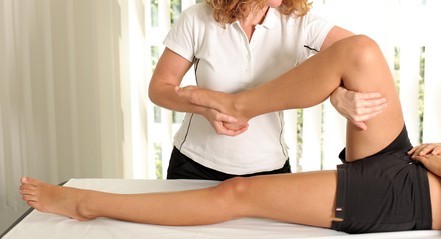Written By: Barbara Gilly massage therapist at Hands On Health in Cary NC
The benefits of weight-bearing exercise and stretching are well known, but just as important to the health of your muscles and joints is getting their full range of motion every day. We’ve built a world where we are stuck in one position for most of the day; whether it’s at a computer, behind the wheel of a car or relaxing on the couch, our body is folded in the sitting position and our joints are only moving within a tiny part of their range of motion. Just like the Tin Man from the Wizard of Oz we can rust into place if we don’t regularly apply oil to our joints. How do we do this? Movement.
As fitness expert and kettlebell instructor Shawn Mozen puts it: “Simply stated, the goal of Joint Mobility training is to help lubricate the joints and keep them healthy and functioning at their best. To do this, we perform exercises that range from the simple to the complex. As you move your joints you allow fluid to circulate around them and it is this fluid that acts as a lubricant and in a sense a healer for your tired body.”
“It is often overlooked by fitness enthusiasts as being too easy and mistakenly thought of as unnecessary. Joint mobility practice is often characterized by simple slow circular rotations that offer health benefits that in many cases far outweigh simple stretching. In fact, joint mobility and flexibility go hand in hand and to practice one without the other is a serious mistake.”
You don’t have to invest too much time in order to feel results. If I do absolutely nothing else in a day fitness-wise, I’ll still do a simple routine of movements. Starting at the head and moving down I describe a circle ten to fifteen times in each direction at each of these points:
- Neck (gently dropping my head forward and rotating clockwise then counterclockwise, keeping the jaw soft. A clenched jaw can lock restrict neck movement.)
- Shoulders (alternating as if doing the back stroke to start, then alternating forward.)
- Elbows (this is an often neglected joint. Let your upper arm hang by your side and circle your forearms like a propeller.)
- Wrists (arms out in front of you, make the widest circles you can with your hands.)
- Gentle Spine Rotation (arms hanging gently at your side, knees at shoulder width and slightly bent. Gently turn the upper body as far as it will go, first to the right then the left.
- Hips (hands on your hips describe a circle, as if cleaning the inside of a barrel)
- Knees (feet together, hands on knees, gently rotate parallel to the ground)
- Ankles (lift one foot off the ground and circle it in one direction, then the other)
During these rotations you can pay attention to any imbalances you find or places that are more reluctant to move and keep them in mind for the next time you’re stretching. For a shoulder and neck-specific routine which helps combat the Forward Head Posture which we talked about in our last post, here’s a clear and easy YouTube tutorial.

